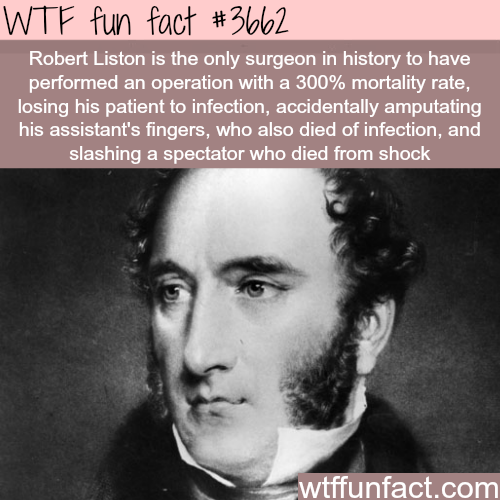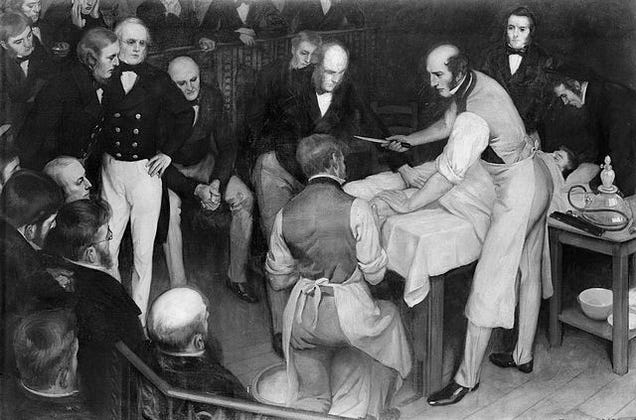See other Science/Tech Articles
Title: 200,000-Year-Old Soil Found at Mysterious Crater, A 'Gate to the Subterranean World'
Source:
[None]
URL Source: http://www.ancient-origins.net/news ... ranean-world-005935?nopaging=1
Published: May 30, 2016
Author: The Siberian Times reporter
Post Date: 2016-05-30 10:30:48 by Ada
Keywords: None
Views: 277
Comments: 6
Locals have heard 'booms from the underworld' in a giant ravine but now scientists say it holds secrets of the planet's past. Many Yakutian people are said to be scared to approach the Batagaika Crater - also known as the Batagaika Megaslump: believing in the upper, middle and under worlds, they see this as a doorway to the last of these. The fearsome noises are probably just the thuds of falling soil at a landmark that is a one-kilometre-long gash up to 100 metres (328 feet) deep in the Siberian taiga. Batagaika started to form in 1960s after a chunk of forest was cleared: the land sunk, and has continued to do so, evidently speeded by recent warmer temperatures melting the permafrost, so unbinding the layers on the surface and below. Major flooding in 2008 increased the size of the depression which grows at up to 15 metres per year. Such 'thermokarst depressions' can be observed in the north of Canada, but Batagaika is two-to-three times deeper. Pictures: Alexander Gabyshev, Research Institute of Applied Ecology of the North Such 'thermokarst depressions' can be observed in the north of Canada, but Batagaika is two-to-three times deeper. Pictures: Alexander Gabyshev, Research Institute of Applied Ecology of the North Such 'thermokarst depressions' can be observed in the north of Canada, but Batagaika is two-to-three times deeper. Pictures: Alexander Gabyshev, Research Institute of Applied Ecology of the North The result is an unparalleled natural laboratory for scientists seeking to understand the threat to permafrost due to climate change. A recent expedition to the partially manmade phenomenon sought to date the layers of soil which had been frozen in time as permafrost, and also to gather samples of plants and soil. Until now, it was believed the layers of soil were around 120,000-years-old. But Professor Julian Murton from the University of Sussex - who inspected the site near the village of Batagai, in Verkhoyansk district, some 676 kilometres (420 miles) north of Yakutsk, capital of the Sakha Republic - determined that the correct age is around 200,000 years old. 'This project will allow us to compare the data of similar objects in Greenland, China, Antarctica. Data on ancient soils and vegetation will help us to reconstruct the history of the Earth,' he told Russian journalists.
Post Comment Private Reply Ignore Thread
Top • Page Up • Full Thread • Page Down • Bottom/Latest
#1. To: Ada (#0)
Yeah "the partially manmade phenomenon"! Wonder if any of the wood cleared was wasted on printing the Jew York Times or Slime Magazine. Ain't it exciting? We're triggering giant gashes in the earth and it allows us to examine the earth's great wounds! ----------------------------------------------------- A Scottish surgeon who practiced all over Britain, he earned respect for his skill in amputations. Liston practiced in the early 1800s, before anesthesia was popular. Cutting and sawing on a conscious, shrieking patient took strong nerves and a strong stomach. The shorter the operation, the lesser the suffering of the patient and the greater the chance that the patient would survive. Liston could amputate a leg in two minutes. This was impressive, but it came with impressive drawbacks. Keep in mind, the patient spent the entire procedure fighting as hard as they could, the multiple medical "assistants" whose job it was to hold the screaming patient down. In the confusion, doctors had been known to miss, amputating more than they needed to. As the legend goes, one day Liston amputated much more than he needed to. While amputating the patient's leg at the hip, Liston accidentally sliced through the fingers of one of his assistants. That would have been bad enough, but it proved disastrous when the patient's stump turned gangrenous. The saw must have been contaminated, because the assistant became ill and infected, too. Within a few days, both the patient and the assistant died. However, this single surgery took a victim even earlier. The procedure was being observed by an elderly doctor in a dress coat with long tails. In the confusion, Liston cut through the man's coat. He wasn't cut, but because blood was spurting around, the old gentleman didn't know that. Feeling the tug, and seeing himself covered in blood, the man collapsed on the floor, had a heart attack, and died. Liston, therefore, had performed a surgery with a 300% mortality rate. ================= Imagine lying on a table in a old-school operating room. Faces stare down at you from the viewing galleries above, and your leg throbs with pain from a broken bone -- infection is just starting to set in. The door opens and three men in blood-stiffened aprons walk in, carting a collection of knives and saws. Two of them grab your shoulders and arms and pin you to the table. The third picks out one of the knives from the cart. "Time me, gentlemen," he calls out to the gathered spectators. "Time me." The man grabs your leg and begins to cut just below the knee. He continues to hold onto your leg as one of his lackeys gets a tourniquet around it. To free his cutting hand, he clasps the bloody knife in his teeth and picks up a saw. He cuts back and forth through the bone, drops the severed leg into a bucket filled with sawdust, and sews you up, to the applause of the men sitting in the wings. As promised they've timed the whole procedure -- from first incision to clipping the loose threads on the sutures -- at just two and a half minutes. In his most famous mishap, he was moving so fast that he took off a surgical assistant's fingers as he cut through a leg. The man who just flew through your amputation with apparent reckless abandon was Dr. Robert Liston, one of the finest surgeons of the time. Dr. Richard Gordon, a surgeon and medical historian, calls Liston the "fastest knife in the West End." His style may have seemed careless, but in the age before anesthesia, speed was essential to minimizing the patient's pain and improving their odds of surviving surgery. Slower surgeons sometimes had pain-wracked and panicked patients wrestle free from their assistants and flee from the operating room. Only about one of every 10 of Liston's patients died on his operating table at London's University College Hospital. The surgeons at nearby St. Bartholomew's, meanwhile, lost about one in every four. Liston's quick hands were so sought after that patients sometimes had to camp out in his waiting room for days waiting for their turn to see him. Liston tried to see every last one of these patients, no matter their condition. He especially loved treating those cases that his fellow surgeons had dismissed as beyond help, which earned him a reputation among colleagues as being showy. Occasionally, Liston's speed and showmanship actually were a hindrance to his operations. Once, he took a patient's testicles off along with the leg that was being amputated. His most famous (and possibly apocryphal) mishap was the operation where he was moving so fast that he took off a surgical assistant's fingers as he cut through a leg and, while switching instruments, slashed a spectator's coat. The patient and the assistant both died from infections of their wounds, and the spectator was so scared that he'd been stabbed that he died of shock. The fiasco is said to be the only known surgery in history with a 300 percent mortality rate. Liston had more going for him than just a quick and (mostly) steady slice, though. He was a highly-regarded surgical instructor and prolific inventor. Some of his creations, like the "Liston splint" and "bulldog" locking forceps, are still around today. He also published two medical texts, The Elements of Surgery and Practical Surgery. Towards the end of his career, Liston made medical history and performed a surgery that made his nimble hands obsolete in Britain. From that point on, pain would no longer be a hurdle to successful surgery, and speed wouldn't be the surgeon's greatest asset. In 1846, Liston received a patient named Frederick Churchill, whose right knee had been causing him terrible problems for years. None of the treatments he'd been given before had worked, and now the only option was amputation. The day of the surgery, Liston walked into the operating room and, instead of grabbing a knife and asking his audience to time him, he pulled out a jar. Ether, American dentists and doctors had recently demonstrated, could be used as a surgical anesthetic. "We are going to try a Yankee dodge today, gentlemen," Liston told the crowd, "for making men insensible." Liston's colleague, Dr. William Squire, administered the anesthesia. He held a rubber tube to Churchill's mouth so he could inhale the ether, and after a few minutes, he was out. Squire placed a handkerchief laced with more of the stuff over Churchill's face to keep him that way, and then Liston began the operation. A mere 25 seconds later, the amputation was complete. Churchill roused a few minutes later and reportedly asked when the operation was going to begin, to the amusement of the audience. Further use of ether in Europe's operating rooms revealed its drawbacks. It irritated surgeons' lungs, caused vomiting and other side effects in patients and, in some windowless rooms where surgery was performed by gaslight, ignited and caused fires. Anesthetics would continue to improve and become more common in medicine, but Liston wouldn't get to see much of their progress. He died in a sailing accident less than a year after Churchill's surgery, still the fastest knife London had ever known. U.S. Constitution - Article IV, Section 4: NO BORDERS + NO LAWS = NO COUNTRY
And to think with all the health problems I have encountered in the last few years, I likely should have been dead long ago. But I am a tough old bird and I keep on going. ;)
"When bad men combine, the good must associate; else they will fall, one by one." Edmund Burke
Fascinating, isn't it! You'd think some patients would at least drink themselves unconscious first before ether came along.
----------------------------------------------------- =================================== Go in to have a wart taken off and lose both your leg and your nuts. We've improved somewhat, I guess. (They don't call them 'practitioners' for nothing. U.S. Constitution - Article IV, Section 4: NO BORDERS + NO LAWS = NO COUNTRY
This seems to be the month for the family jewels in news stories :-3
----------------------------------------------------- 
#2. To: NeoconsNailed (#1)
(Edited)
 ------
------
#3. To: HAPPY2BME-4UM (#2)
#4. To: HAPPY2BME-4UM (#2)
#5. To: NeoconsNailed (#4)
Occasionally, Liston's speed and showmanship actually were a hindrance to his operations. Once, he took a patient's testicles off along with the leg that was being amputated. His most famous (and possibly apocryphal) mishap was the operation where he was moving so fast that he took off a surgical assistant's fingers as he cut through a leg and, while switching instruments, slashed a spectator's coat. The patient and the assistant both died from infections of their wounds, and the spectator was so scared that he'd been stabbed that he died of shock.
#6. To: HAPPY2BME-4UM (#5)
Top • Page Up • Full Thread • Page Down • Bottom/Latest